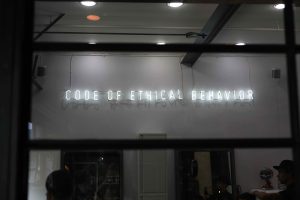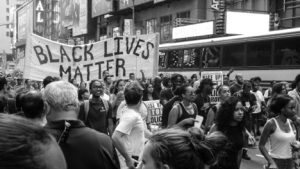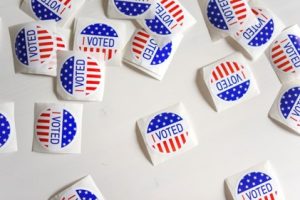Chapter 7. Ethics
The “fly on the wall” approach in anthropology, still taught as an antidote to the influences of one’s subjectivity on the research process, only obscures the fact that even those who try to be insects are, at the very least, already influencing the social environment in which they conduct their fieldwork and, more important, are already committing themselves to a very clear moral and political position—that of letting things remain as they are, or leaving the status quo untouched. Neutrality is impossible—or better still, neutrality may work for the maintenance of privileges, but it does not work for all. Many forms of oppression, exclusion, and death continue to be perpetrated in the name of objectivity and detachment.
—Joȃo Helios Costa Vargas, Catching Hell in the City of Angels
Introduction
Joȃo Helios Costa Vargas spent two years living in South Central Los Angeles, a region of predominantly Black neighborhoods known for high rates of poverty, crime, and violence. When recounting the findings of his ethnographic research, he refused to write “neutrally.” As a human being, he viewed the prospect of writing as if he were merely “a fly on the wall” distasteful if not unethical. He wanted to name oppression outright. To testify to the outrages and injustices he saw perpetrated against those living in these communities by those with power—the police, school authorities, the public at large. And so he did, and his book is both more powerful and more honest for that. His choice is both an example of reflexivity (see chapter 6) and an example of ethics in practice. In this chapter, we explore a great many ethical considerations made by qualitative researchers and argue that being ethical is a constant and ongoing responsibility for any researcher and particularly for those involved in social science. Unlike other fields of science, the lines between doing right and doing wrong are sometimes hard to distinguish, a situation that puts tremendous pressure on every qualitative researcher to consider ethics all the time.
This is a very important chapter and should not be overlooked. As a practical matter, it should also be read closely with chapters 6 and 8. Because qualitative researchers deal with people and the social world, it is imperative they develop and adhere to a strong ethical code for conducting research in a way that does not harm. There are legal requirements and guidelines for doing so (see chapter 8), but these requirements should not be considered synonymous with the ethical code required of us. Each researcher must constantly interrogate every aspect of their research—from research question to design to sample through analysis and presentation—to ensure that a minimum of harm (ideally, zero harm) is caused. Because each research project is unique, the standards of care for each study are unique. Part of being a professional researcher is carrying this code in one’s heart, being constantly attentive to what is required under particular circumstances. Chapter 7 provides various research scenarios and asks readers to weigh in on the suitability and appropriateness of the research. If done in a class setting, it will become obvious fairly quickly that there are often no absolutely correct answers, as different people find different aspects of the scenarios of greatest importance. Minimizing the harm in one area may require possible harm in another. Being attentive to all the ethical aspects of one’s research and making the best judgments one can clearly and consciously are integral parts of being a good researcher.

Being an Ethical Researcher
Being a competent qualitative researcher means being reflective (chapter 6) and being ethical. In the next chapter, we will explore the regulatory requirements of ethical practice, but it is important to recognize that being ethical goes well beyond following the rules and regulations. Born from an epistemological perspective (chapter 3) that places value on the diversity of meanings and unique perspectives of the humans we study, qualitative researchers’ ethics encompass truthfully and generously reporting those meanings and perspectives, being attentive to what people tell and show us, and honestly appraising the harm and efficacy of what we report. The rules and regulations guiding qualitative research tend to focus on the importance of informed consent and the general balancing of potential benefits against likely harms. However, our duties to those with whom we interact go well beyond these aspects of our research. Further, because each study is unique and involves relationships between a researcher and research “subjects,” proceeding ethically requires constant attention and deliberation. One might make dozens of decisions during the research process that have ethical implications. It is not permissible to stop thinking about ethics after you have submitted your application for institutional review board (IRB) review (more on this process in chapter 8) or once you have received permission to proceed with your study: “Ethics are more than a set of principles or abstract rules that sit as an overarching entity guiding our research.… Ethics exist in our actions and in our way of doing and practicing our research; we perceive ethics to be always in progress, never to be taken for granted, flexible, and responsive to change” (Davies and Dodd 2002:281).
Reviewing agencies such as IRBs will not scrutinize all the ethical decisions you need to make throughout your research process. Only you can do this. It is thus vitally important that you develop your sense of ethics as part of your identity as a researcher. Being reflective can help, as you are more likely to identify and acknowledge and confront ethical issues if you are paying attention to the process.
This chapter is divided into two parts. The first part walks you through the research process, highlighting a variety of places where ethical issues may emerge. The second part presents several ethical scenarios. I encourage you to talk through these with a friend or colleagues from class. You may find as you do so that you disagree on what the “correct” ethical decision is. This is absolutely normal and an important lesson. There are many “gray” areas in ethical consideration where there is no clear right or wrong answer. Sometimes there are “least bad” courses of action. Being ethical does not always means doing the right thing—it simply means trying to find the right thing to do and being able to justify the decisions you make.
Part 1: Ethical Issues throughout the Course of the Study
Research Design
Many of the rules and regulations around conducting qualitative research focus on the research design. For example, institutional review boards routinely ask you to justify your sample, while including members of vulnerable populations (e.g., children) in the study will trigger a heightened review. In chapter 8, we will look more closely at the formal requirements, but before getting there, we need to take a step back and think about the study design more generally. Why is this study being conducted in the first place? If human subjects are involved (this is the aspect that triggers formal review), any study is going to affect them to some extent. The impact on the humans we study could be quite minimal, as in the case of unobtrusive observations in which no personal information is recorded. Or it could be substantial, as in the case where people are asked very personal and potentially “triggering” questions about a harmful phenomenon. Or it could be simply the inconvenience of being bothered by a nosy researcher. Is your study worth the bother? Recognize that the advantages of a successful study accrue to you in the first place (completing your degree requirements, publishing an article, etc.) and secondarily contribute to collective knowledge. Make sure that that secondary contribution is really worth it. This may require you to do enough foundational research to ensure that what you are doing is truly novel and worth the expense.
Once you have determined that, yes, it is worth doing this study because we don’t yet know the answer to the research questions you’ve posed and those questions are good questions to ask, you need to consider whether this is the best and least harmful way to answer those questions. Balance the contributions to knowledge and the potential harm to humans posed by the research. Sometimes, the knowledge is so important that we are willing to lean a little harder on our research subjects, causing them a bit more discomfort or potential harm than we would be willing to do for a study of less importance. To make this kind of calculation, you have to be very honest about the importance of your work, another aspect of reflexivity (chapter 6). You also have to think about your research subjects honestly and the power they have to protect themselves from your intrusion. Poor people often get studied more often than rich people because they have less power to protect themselves from unwanted intrusions on their privacy. Designing a study around easy-to-access people is an ethical decision. Sometimes it is the right decision, sometimes not.
Just as you have to consider your sample in terms of power and the ability of some groups to hide from your scrutiny, you also have to consider your sample in terms of who gets to be included and what the implications of exclusion are on our knowledge. Medical studies that exclude certain hard-to-reach populations out of convenience are poorer for that exclusion. You want to be very clear about stating and justifying both your inclusion criteria and your exclusion criteria. Inclusion criteria are those characteristics your research subjects must have in order to participate in the study. Being of adult age is a common inclusion criterion. Exclusion criteria are those characteristics that would disqualify people from being part of your study. These are established to protect potential participants, as in the case where those not born in the United States are excluded from a study that observes potential criminal behavior so as to protect them from deportation orders and reporting mandates. On the other hand, by excluding this group of people, you have limited their insights and perspectives from being heard.
Data Collection
Once you have designed your study in an ethical manner, you will have to find the people to match your inclusion criteria and invite them to participate. In most cases, you cannot ethically collect data without permission. This permission must often be in writing, and there are formal rules about what this writing looks like, which will be fully described in chapter 8. What about situations where you are simply observing behavior? If this is in a private setting, you will still need to get permission as well as access to the site. Who is giving you access to the site? This, too, raises ethical considerations. Is this a person with power (e.g., an employer) such that their permission may influence employees’ consent to be included in the study? If a principal of a high school allows you to observe teachers teach, does it matter that there is a lawsuit pending against the principal for unlawful terminations of various teachers? Yes, it does! You must consider how you and your research may be implicated in ongoing workplace issues. Ethics come into play even in public settings, especially in cases where the people being observed have little choice but to act in public (e.g., a community pool during a heatwave).
One of the obvious harms that can be created by a nosy researcher other than inconvenience and bother is the breaching of confidential statements or publications of private reflections and actions. You may think you are doing enough to protect your research subjects from harm by keeping what you learn anonymous (e.g., using pseudonyms or reporting only aggregate group data—e.g., “community pool members were rowdy”), but anonymity is easily breached. Even when no “identifiable information” is collected, the risk of being able to attribute data to particular individuals is never nonexistent. Formal rules and regulations specify in great detail various levels of anonymity and confidentiality permitted (see table 7.1). The bottom line is that we have to act as if what we write of people we observe and talk to may be individually identified (however unlikely) and consider what harm would occur to those people when we publish our research. This might necessitate multiple case sites to protect our subjects from identification (e.g., three community pools rather than just one) or even rethinking the kinds of questions we ask, refraining from pushing our interview subjects to address supplemental questions (those that are not directly tied to our research questions) that might cause them harm or embarrassment to them if they were identified.
Table 7.1. Anonymous and Confidential Data, A Vocabulary
| Word | Definition |
|---|---|
| Anonymous research | At no time will the researcher or anyone associated with the project know the identity of the participants; the information collected does not contain any identifiable information, and the risk of being able to attribute data to particular individuals is low |
| Confidential research | Proper safeguards are in place to protect the privacy of participants and their information from unauthorized access, use, disclosure, modification, loss, and theft |
| Anonymized data | Data that is irrevocably stripped of all direct identifiers (e.g., name) and where the risk of reidentification from remaining indirect identifiers is low, and where no codes exist that could allow for future re-linkage when the data is anonymized, even the researcher will not be able to link data to participants |
| De-identified data | Data in de-identified form and where the existing key code is held by a custodian or third party (e.g., Qualtrics) or where the linking code has been destroyed |
| Coded data | A link exists between a unique code (often a number) and individual identifying information (e.g., name) |
Another aspect of gaining permission is deciding how much information about the study to provide in advance. Again, there are formal rules that require honesty, simplicity, and clarity when explaining the research study. The language must be understood by the particular research subjects. If one is doing research with children, the language describing the study is going to necessarily be different than if one is explaining the research study to adults. If one is doing research with nonnative English speakers, the language should be in the native language as well. There are many times, however, when these simple rules fail to take into account the research design’s requirements. Some researchers, especially psychologists, employ a certain level of deception in their research design, as stating honestly what the study is about would undercut the value of the findings. Accurate information is sometimes not possible without deception. When this is the case, reviewing agencies can make exceptions to the rule of fully informed consent so long as the deception is minimal and poses no harm and there is some debriefing after the fact (as in an experiment in which the full study is explained as soon as the experiment ends). There are other times, however, when researchers accurately describe the general purpose and goal of the study but fail to mention details that, had the subjects known in advance, they might have withheld their consent. This might be the case, for example, where a powerful CEO is told that he is taking part in a study of power dynamics at large corporations when in fact the study is also focused on gender imbalances and male CEOs’ biases toward women in leadership. The simple explanation was not deceptive, but the CEO may have decided to opt out had he received all the information. In such a case, the researcher needs to balance the potential benefits of the study with the likely harm to the subject and may very well come to the conclusion that this is an ethical practice. Others might disagree, of course.
There are a host of other questions to consider. How long will you stay in the field? What kinds of relationships will you form with the people you are observing, and how will you gracefully “exit” the field with the least amount of pain to those who have come to rely on your presence? What level of collaboration do you have with your participants? How deep are your interview questions? Are your probes too invasive? All of these are ethical questions that arise during the data collection phase.
More questions arise during data analysis and the presentation of your findings. Because we have not yet gotten to those subjects in this book, I am going to reserve much of the discussion on these and point them out in relevant chapters. There are two later-stage ethical challenges, however, that you need to plan for in advance: Who will own the data you collect? What kind of impact might the presentation or reporting of your findings have?
You will often need to think about who owns the data that has been collected and analyzed and who has rights of control over it. For example, some researchers negotiate access with employers or supervisors at particular worksites. Those employers or supervisors may then expect some control over the data collected. Maybe they want to see the results first, before anyone else, or perhaps they even want a say in which results are made public. It is important to work out any agreements on the use of the data in advance so you are not put in a position of having someone else dictate what you can do with your data.
You should also consider the impact your study may have on those who granted you access to the site and to all of those who were willing to be interviewed or observed. If your findings could result in a negative outcome (anything from bad press to loss of business or community support to public shaming of an individual or group), you should anticipate this and consider your ethical obligations, obligations that may exist to multiple persons and groups and may be in conflict with one another. How will you handle this?
Many of these questions (and more) will arise during the course of your research. Keeping a journal will help you reflect on the challenges. Every decision you make will probably carry an ethical consideration. To give you a sense of how ambiguous these ethical decision points can be, let’s walk through a few ethical scenarios.
Part 2: Ethical Scenarios
Below are several short scenarios that will help you think through how to spot ethical issues and how you might resolve them. Pay attention to all stages of the research process, from design to publication. It’s possible that one or more of the scenarios are fatally flawed from the very start. Think about what each researcher owes to (1) the scientific community of which they are a part and (2) the human beings with whom they are building relationships. How to properly balance the two? A few questions follow each scenario, but you need not confine your consideration to these questions. Note that each scenario might bring up more than one ethical issue!
Scenario 1: The Glass Ceiling

Jacinda would like to understand how women deal with sexual discrimination and harassment in engineering firms. She is able to secure a temporary job as a receptionist at Engineer-O, a Fortune 500 firm. To everyone in the company, she is simply a “temp.” While working there, she approaches several women about their experiences. A few are willing to sit down and be recorded by her as she asks them questions about working at the company. In addition to the interviews, she keeps notes of her own daily experiences at the company (during her breaks and at night). She witnesses many examples of sexual harassment—managers who make sexual comments to their employees. She also takes pictures of the office and cubicle walls of some of the male employees, where sexually explicit images of women and/or misogynistic sayings are posted.
Questions to consider: From whom must Jacinda get consent for her study? The women she interviews, the men whose walls she takes pictures of, those whose activities she observes? Does she need to tell her boss that she is an undercover researcher? Should she?
Scenario 2: #BlackLivesMatter

Anne is a White twenty-five-year-old graduate student who is interested in police-community relations, especially in urban neighborhoods that have experienced conflicts (e.g., police shootings of unarmed Black men and children). She has a very close friend, Jamal, who lives in one such neighborhood. He allows her to hang out with him for a summer. She carries around a notebook and writes down observations frequently. She also records a few interviews with Jamal, his best friends, his parents, and his beloved grandmother, whose house he lives in. One Sunday, while she is at his grandmother’s house, the police knock down the front door and force everyone to lie down on the ground as they search the premises. She begins to cry and writes movingly afterward of the pain and terror written on Joyce’s (Jamal’s grandmother) face as they lie next to each other with a gun at their necks. On another occasion, she is present when Jamal finds out his best friend has been fatally shot by a local gang. She gets in the car with Jamal as he looks for the killer. He asks her to hold his gun. She writes all of this down and plans on publishing everything.
Questions to consider: What are Anne’s duties and responsibilities in terms of publishing these events? From whom must she get consent? What if Joyce and Jamal’s friends did not know she was a graduate student conducting a study? Did she commit a crime when she carried Jamal’s gun for him? Should she have received permission from the police department before conducting this study?
Scenario 3: The Unhoused

Julie is doing a study of the unhoused in San Francisco. She approaches several men on the street and explains her study and asks if she can follow them around. Twelve agree. She spends several weeks in their company—getting to know them, following them as they panhandle and recycle old bottles and cans, and asking them questions about their lives. She records many of their conversations on her phone. When it is too cold outdoors, she sometimes allows one or two men to crash at her apartment. She knows they really dislike the shelters and how they are run. She also encourages them all to use her shower during the course of the study. Other times, she buys them food. Once or twice, she has paid for beers and has sat with them as they drink and reminisce about their childhoods. And still other times she has given “Julius” cash, even though there is a chance he will use it to buy heroin. After six months, she realizes she has enough material to write a book about the men. She leaves San Francisco and moves back to her home in Berkeley. Although she tells the men the study is over, she does not follow up with them or provide any of them with contact information for her.
Questions to consider: What does Julie owe the unhoused participants of her study after six months? Should she have provided them with a way to contact her in the future? Should she have made an attempt to reconnect with them? Was it appropriate to allow the men to use her apartment? Would it have been wrong not to do so? Should Julie have helped the men more? Did she help them too much? Was it wrong to drink beer with them? To give Julius cash he might have used to buy heroin? If her book is published to great success, does she owe any of the proceeds to the men?
Scenario 4: Studying Upside Down

Franco is a graduate student interested in understanding the practice of racial discrimination and how this might be related to individual beliefs about insider/outsider status within a community. During the Trump administration, he heard a lot about “White working-class racists,” but he suspects that wealthy White persons are just as discriminatory as poor White persons. He designs a research plan that allows him to hear what people have to say about “who belongs” in the US and a part that allows him to actually observe interactions they have with others. As his father belongs to a very fancy golf club, he plans to (1) interview the members of the club and (2) golf at the club and otherwise hang out and watch interactions between (primarily White) members and (primarily Latinx) staff. He did not ask the club’s permission. The club leadership heard about the study, however, when one of its members mentioned they saw a young man writing things down in a notebook when they were in an argument with a caddy. The club pressured the IRB of Franco’s university to revoke his application. Franco doesn’t fight the decision (how can he?). Still interested in understanding racial discrimination, he uses the same research design, but now at a poor neighborhood’s community pool. He finds some examples of racism in his interviews with the White working-class pool-goers and observes one example of what could be racial discrimination.
Questions to consider: Should Franco have approached the golf club directly to secure permission for this study? Why do you think he did not? Does it matter that his father was a member? Was his original design a good one? Why or why not? How would you have handled the IRB revocation? Is Franco’s new site a good one? Why or why not? Is his decision to observe at a community pool ethical?
Scenario 5: Political Deception

Mumbi, a graduate student from Kenya, is fascinated by American politics. In particular, she wants to understand the increasingly visible role of race among politically active conservatives in the US. She plans to do research at a local Republican Party headquarters during campaign season. She will work there herself and interview other volunteers. Mumbi’s informed consent form explains that she is doing research on “how people engage politically.” Informally, she tells her covolunteers that she is a Republican and that she voted for Trump. However, as a Kenyan citizen, she is not able to vote in the elections, and had she done so, she would never have voted for Trump. She thinks Trump is truly the devil.
Questions to consider: Is Mumbi’s failure to identify herself unethical? What does she owe the people she is interviewing? Is it ethical to omit the motivations for the study? Had she included all the facts about herself and her motivation for the study, would she have received different information from the people she interviewed? Is deception justified in this case or not? Should Mumbi worry about her personal safety?
Scenario 6: What Do Your Friends Say About You?

Serena is a psychology graduate student trying to understand how people make friends. She runs an experiment using primarily college students at a large research university in the Pacific Northwest. In the experiment, she provides students notecards with interesting facts about some strangers and records which strangers get selected as potential new friends. Some of the facts include (1) shops at Walmart, (2) has traveled outside the US, and (3) owns a MAGA hat or T-shirt. She finds that those who espoused fact (2) were overwhelmingly chosen as friends and that only one in five chose a friend that selected (3) and zero chose friends who chose (1). Based on these findings, she develops a theory that people value cross-cultural experiences. She debriefs the students in the experiment and tells them that (1) was the big loser!
Questions to consider: Are there any problems with this study design? Who is likely to be included and who is not likely to be included in the sample? What might be wrong with the theory Serena developed? Were any college students harmed by the questions asked? What would you have advised Serena before she began running the experiment?
Quick Recap of Common Ethical Challenges to Consider
- Who was included in the sample design? Who was not included?
- How did the researcher get entry into the field?
- What did the researcher tell people about their research?
- Was there “informed consent”?
- When reporting findings, was care taken to protect the anonymity, confidentiality, and dignity of the research subjects?
- Does this study contribute to our knowledge about a subject in a way that does not foster harm?
Further Readings
Cwikel, Julie, and Elizabeth Hoban. 2005. “Contentious Issues in Research on Trafficked Women Working in the Sex Industry: Study Design, Ethics, and Methodology.” The Journal of Sex Research 42(4):306–316.
Davies, Deirdre, and Jenny Dodd. 2002. “Qualitative Research and the Question of Rigor.” Qualitative Health Research 12(2):279–289.
Diniz, Debora. 2008. “Research Ethics in Social Sciences: The Severina’s Story Documentary.” International Journal of Feminist Approaches to Bioethics 1(2):23–35.
Fujii, Lee Ann. 2012. “Research Ethics 101: Dilemmas and Responsibilities.” PS: Political Science and Politics 45(4):717–723.
Guillemin, M., and L. Gillam. 2004. “Ethics, Reflexivity, and ‘Ethically Important Moments’ in Research.” Qualitative Inquiry 10(1):261–280.
Knight, Michelle G. 2000. “Ethics in Qualitative Research: Multicultural Feminist Activist Research.” Theory Into Practice 39(3):170–176.
The science and practice of right conduct; in research, it is also the delineation of moral obligations towards research participants, communities to which we belong, and communities in which we conduct our research.
A discrete set of population groups for which heightened (IRB) review is triggered when included as participants of human subjects research. These typically include children, pregnant persons, and prisoners but may also include ethnic or racial minorities, non-English speakers, the economically disadvantaged, and adults with diminished capacity. According to the Council for International Organizations of Medical Sciences (CIOMS), “Vulnerable persons are those who are relatively (or absolutely) incapable of protecting their own interests. More formally, they may have insufficient power, intelligence, education, resources, strength, or other needed attributes to protect their own interests.”
A condition in which the identity of individual subjects is not known to researchers; although this is not often truly possible, researchers can nevertheless take steps to ensure that the presentation of the data to a general audience remains anonymous through the use of pseudonyms and other forms of identity masking.
A condition in which the researcher knows the identity of a research subject but takes steps to protect that identity from being discovered by others; this may require limiting presentation of sensitive data. While the connection between the participants and the results are known, the terms of the confidentiality agreement between the researcher and the participants limit those who will know of this connection. Compare to anonymity.

